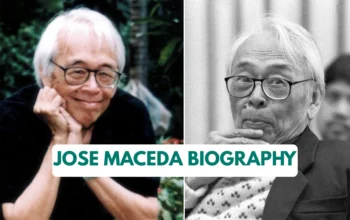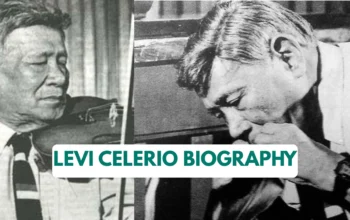Rodolfo S. Cornejo (1909–1991) occupies a special place in 20th-century Filipino music. A composer, pianist and conductor, Cornejo is remembered for transcribing and reworking Philippine folk melodies into concert music and for works that bridged local idioms and Western classical forms. This biography explores his life, training, notable works, style, recordings, and the legacy he left for Filipino music.
Early life and education
Rodolfo S. Cornejo was born on May 15, 1909 in Manila. Accounts of his early musical training show that he began piano lessons at a young age and developed into a pianist and teacher before fully turning to composition. His lifetime (1909–1991) places him among the generation of Filipino composers who came of age between the two world wars and who emphasized the incorporation of Filipino folk materials into art music.
Career highlights
Cornejo’s career combined performing, conducting, composing and teaching. He built a reputation as a composer who often used Philippine folk songs as source material—either transcribing them or using motifs and rhythms derived from folk music in original compositions. This approach aligned him with other Filipino composers of his era who sought a distinct national voice in concert music.
One of his better-known works is Oriental Fantasy (1944) — a piece for piano, strings and percussion that was recorded with Cornejo at the piano and Howard Hanson conducting the Rochester orchestra, preserving an important document of his tonal language and orchestration choices.
Cornejo also wrote shorter piano pieces and transcriptions that have been used in music education (MAPEH) and local recital repertoires, showing his influence on both concert life and musical pedagogy in the Philippines.
Musical style and influences
Cornejo’s music often mixes lush, late-Romantic harmonic language with rhythmic and melodic elements drawn from Filipino traditional music. He favored clear melodic structures and sometimes exotic—or what contemporaries called “orientalized”—sonorities that suited the tastes of mid-20th-century concert audiences. His incorporation of folk material was not mere quotation: he adapted tunes into formal textures (variations, fantasies, and transcriptions) so they could live in concert halls alongside Western repertoire.
Notable works and recordings
- Oriental Fantasy (1944) — piano, strings and percussion; recorded with Howard Hanson and the Rochester ensemble, a rare internationally circulated recording. :contentReference[oaicite:26]{index=26}
- Various piano transcriptions and shorter works used in Philippine music education and recitals (listed in teaching materials and composer biographies).
Because Cornejo’s catalog is not as widely published internationally as some Western composers, many of his pieces survive in local archives, school anthologies, and occasional recordings. Recent scholarship has begun to revisit his output and place it in the broader narrative of Filipino art music.
Later life and death
Rodolfo S. Cornejo passed away on August 11, 1991. Obituaries, local composer listings and educational anthologies note his contributions to Philippine musical life and mark his death in 1991 at the age of 82.
Legacy and why he matters
Cornejo matters for several reasons:
- National voice: He belongs to the generation of Filipino composers who intentionally incorporated indigenous and folk elements into classical frameworks, contributing to a national musical identity.
- Recordings and outreach: His recordings, particularly the Oriental Fantasy, provide a listening window into Filipino composition during the 1940s and show how Filipino musicians engaged with international conductors and orchestras.
- Educational influence: His piano works and transcriptions are used in teaching materials and local performance repertoire, keeping his music in circulation among students and teachers.
Recent academic attention (for example, studies in Philippine music journals and university archives) has re-evaluated Cornejo’s role, especially regarding his use of folk material between 1935 and 1942 and the place of those works in the development of Philippine concert music.
FAQs about Rodolfo Cornejo
Q: When and where was Rodolfo Cornejo born?
A: He was born on May 15, 1909, in Manila, Philippines.
Q: What type of music did Cornejo write?
A: Cornejo composed piano works, transcriptions of folk songs, chamber pieces and orchestral works that often used Filipino folk materials within Western classical forms.
Q: Is there a famous recording of his music?
A: Yes — Oriental Fantasy (1944) exists on historic recordings featuring Rodolfo Cornejo at the piano with Howard Hanson conducting.
Q: When did he die?
A: Rodolfo S. Cornejo died on August 11, 1991.
Q: Where can I find his scores or recordings?
A: Scores and recordings are most commonly found in Philippine archives, university libraries, local anthologies (MAPEH/education resources), and on historical recording platforms or libraries that carry mid-20th-century music. Academic libraries and national music collections in the Philippines are good starting points.
Conclusion
Rodolfo S. Cornejo remains an important figure in the story of Filipino classical music. Born in 1909 and active through the mid-20th century, he built a career as a pianist, conductor and composer who helped shape a national voice by weaving Philippine folk materials into concert music. Recordings like Oriental Fantasy and educational transcriptions keep his music alive. Renewed scholarly interest promises to bring Cornejo’s contributions to a wider audience, ensuring his place in the canon of Philippine music history.




